The major difference between Feiyue and Vivobarefoot shoes is that Feiyue shoes are mostly designed with canvas uppers while Vivobarefoot shoes have leather uppers or a mix of synthetic mesh and leather.
Safe to say these two brands even though may appear unalike, they do share a lot more in common than you can imagine.
A little background of Feiyue and Vivobarefoot shoes
Table of Contents
Vivobarefoot shoes were founded by two long-time cobblers who’ve always had a passion for footwear in 2012, Galahad and Asher Clark. And their desire was to make sustainable footwear that fell in the category of barefoot shoes.
They believed the closer people came to nature, the more they’d want to protect it. Their shoes have been bringing people closer to the earth under their feet.
Vivobarefoot shoes come in both high-top boots and low-top shoes.
The Feiyue company’s origin goes farther back to the streets of Shanghai in the 1920s. Back then it was the footwear for monks and peasant workers.
In 2006 it found its way into France and from there to the rest of the world. Feiyue means flying forward.
The aim of the company was to make simple, classic, and functional shoes that everyone can identify with, a timeless shoe. Feiyue shoes are either low top or high-tops.
The high-tops actually look a lot like a half cab.
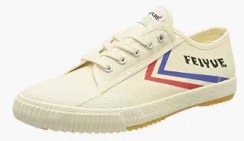
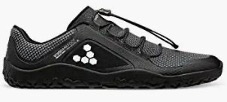
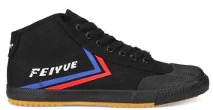
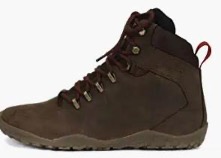
Why the need for this comparison?
As I’ve noted earlier, both shoes are essentially functional shoes that can stand in for each as alternatives. They are both what footwear geeks would call zero drop shoes.
I would love to help you make the best choice depending on your needs, budget, or present shoe collection.
It is important to know the distinction between these two shoes so you can make informed decisions as to purpose: do you love outdoors, trail walking along bush paths, or you love hiking through forests savoring nature?
It would do you a world of good if you knew the right choice of shoes to buy for your hobby.
In this article, I will be breaking down not only the differences but also the similarities between the shoes, explaining the features, pros, and cons of each shoe, quality, and stuff that you need to know before making a purchase.
Let’s move a step closer now.
Pros of Feiyue shoes
Each one to his own they say. And all shoes have their pros and cons. Let us consider the cons of Feiyue shoes. They are:
- Functional
- Natural fit
- Great grip
- Flexible
- Super cheap
- Zero drop
Functional
The Feiyue are functional shoes, built ready to be worn. So much so that parkour enthusiasts in a particular rate it as one of the best shoes for the sport.
From the material of the uppers to the deeply indented outsoles for grip, Feiyue shoes have transcended Shaolin dojos to become one of the sports poster child shoes.
Natural fit
The shoe wraps around your feet comfortably without compromising your natural gait. They are soft all around and the footbed is not too soft or too hard.
It is for a natural fit that sports fans find them their go-to shoes for outdoor use.
Great grip
The outsoles of Feiyue shoes make them an easy sell. The serrated cuts run from the forefoot to the heel, they reach around to the edges of the outsole.
The outsole is made of rubber material making them quite sticky on surfaces.
Flexible shoe
Feiyue shoes are flexible in that they conform with the movement of your feet. They allow a wide range of movement for walking and running.
Super cheap shoe
Feiyue shoes are, yes, super cheap. Although the reason is all so obvious, like I said, you get what you really pay for with most shoes.
And since this one is a functional shoe originally made for Kung Fu monks, you don’t expect it to pack much except enough to cover your feet and give you a good grip.
Feiyue shoes can cost anywhere around $48.66 a pair (on Amazon). Tell me that isn’t cheap.
Zero drop capabilities
This is one of my favorite reason for buying a Feiyue shoe. They are level against the floor. Because they have zero drop you can wear them all day, run, and walk with them without feeling fatigued in the muscles of your feet.
The cons of Feiyue shoes
And here are the cons of Feiyue shoes should you consider buying them. They’re not much, but still are a big deal:
- Uneven wear
- Low quality
Uneven wear
Having used a Feiyue for two years, six months of which I started learning parkour, I can tell you for a fact that they don’t wear our like other shoes.
If you do parkour like me, you will notice the wear around the big toe area in the forefoot. And also on the heel area too. It wears down into a hole.
They also tend to break open in the sides after a few months of hard use. Of course, anywhere you experience would be largely influenced by how frequently you use the shoes.
Low quality
The first cons follow directly from this one. The low quality of the outsole gives rise to early wear.
I wish Feiyue would up their ante in this regard. Yes, they are lightweight shoes, which is a great thing. And there are lightweight shoes that last for more than two years with extensive use.
These are the cons of Feiyue shoes, people. Cheap shoes, don’t blame them.
The pros of Vivobarefoot shoes
Vivobarefoot has been in the game of footwear production long enough to have changed the rules. They took everyday shoes and transformed them into more functional shoes. Yet there are pros for these shoes:
- Low drop
- Thin, flexible soles
- Thin, flexible inner soles
- Wide toe box
Low drop
All Vivobarefoot shoes are low drop which gives them a flat look and feel. There is no raise in the heel so your launch feels natural when walking and running.
The shoes allow a natural range of movement as if you are barefoot. Few shoes are able to achieve the balance between resilience and efficient low drop but Vivobarefoot does.
Thin, flexible soles
The soles are ultra-thin puncture-free soles which help them give your feet natural feedback when you walk. They also protect your feet from hard surfaces which may cause injury to your skin.
The soles on Vivobarefoot are some of the thinnest in the market. They measure 3 to 5mm. Vivobarefoot has a wider range of shoe designs than Feiyue hence they have hiking boots too.
Even in these boots, the soles are thin yet tough showing an amazing balance between function and resilience.
Thin, flexible inner soles
Some Vivobarefoot shoes like the Primus Lite don’t have inner soles giving them a great feeling of low drop and sensory attachment to the ground.
But the Vivobarefoot Gobi II has an optional cork insole included in the box at purchase. This is so that you can decide to get an extra feeling from wearing them.
I personally like to use the cork insole because of the antibacterial nature which protects the feet when you don’t wear socks.
Wide toe box
The toe box on Vivobarefoot shoes allows your feet to wiggle freely. This completes the missing of creating shoes that are barefoot. There’s not tightening of the feet in the shoes.
The cons of Vivobarefoot shoes
As amazing as the shoes are here are a few downsides:
- No arch support
- May result in flat-footedness
- Expensive
No arch support
Vivobarefoot shoes have no arch support. They are low-drop shoes is why. But shoes that have arch support have them for a reason and it is to protect the feet from aches and other complications.
Of course, without arch support, your feet enjoy full-range movement but long use without arch support definitely has its own problems.
May lead to flat-footedness
Long use of Vivobarefoot shoes may cause your feet to become flat. Which is a direct result of a lack of arch support.
Expensive
Vivobarefoot shoes are pricy. For all the great quality they offer the cheapest pair of Vivobarefoot shoes are about $59.40 for Vivobarefoot Women’s Primus lightweight.
Don’t be dismayed though. These shoes really give you what you pay for.
What are the similarities Between Vivobarefoot and Feiyue shoes?
The two shoes share a few similarities that put them on the same pedestal outside of quality and aesthetics. They are:
Features
- Low drop: both shoes offer users a low drop silhouette that allows ideal walking and running movement.
- Thin and flexible soles: both shoes offer thin soles that help the feet spring along naturally.
- Lace-up closure: both shoes have lace-up in their low tops, mid and high-tops.
- Logos on the sides: both shoe brands feature their logos on their sides.
- Logos on the tongues: both shoes have tongues under the laces with their logos on them, and a patch with numbers underneath.
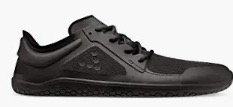
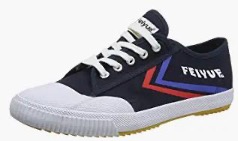
Overall Quality
From my observation, Vivobarefoot shoes have better quality than Feiyue shoes. Vivobarefoot makes leather shoes, less canvas, and rubber soles that are puncture-proof.
Feiyue uses canvas and their soles even though are rubber isn’t so great in the durability department.
Leather
Feiyue shoes don’t make use of leather as I’ve said before. So if you want that leather durability you should be siding up to a Vivobarefoot shoe.
Sole
Same here; Vivobarefoot shares thin flat soles with Feiyue, but unlike Feiyue, Vivobarefoot shoes have tougher terrain-friendly soles.
Durability
I’d give Feiyue shoes 3 out of 5 star when it comes to durability. And Vivobarefoot 4 ½ stars. There you have it, what you need to make your decision in that area.
Price
Vivobarefoot shoes are expensive shoes. They have great different designs that you can choose from. Between $50 to $150 should get you a Vivobarefoot of your choice here on Amazon.
Whereas Feiyue shoes are much more affordable and I recommend them as alternatives. They do their job well if your lifestyle doesn’t require much outdoor. Here on Amazon, you can find Feiyue shoes for as low as $48.98.
Insoles
Vivobarefoot shoes are what they say they are: barefoot shoes. This means they have insoles in their boxes as an optional part of the package. The footbeds are soft and comfortable.
Feiyue shoes also have a thin layer of the footbed you’d find comfortable for a zero drop shoe.
Sizing and fit
Feiyue shoes are easy to size and they also come true to size. They advise on their website to buy the next full size if you wear a half size. That is, if you wear a 10 ½, buy 11. See their size chart here.
Before buying a Vivobarefoot, measure the size of your feet and compare with their chart here where they have explained in detail how to pick a size that fits you properly.
Why should you choose Vivobarefoot?
Buy Vivaboot shoes if you love outdoor hiking, running, and climbing. The soles are specially designed to withstand and proof against puncture which is a great deal.
Why should you buy Feiyue shoes?
Buy Feiyue shoes because they are cheap and are functional enough for a fairly rigorous outdoor activity. Also recommended for parkour lovers.
Which of these shoes are better?
Final verdict: The better of the two shoes is Vivobarefoot. They mark almost all the criteria for a durable outdoor shoe.
Related:
